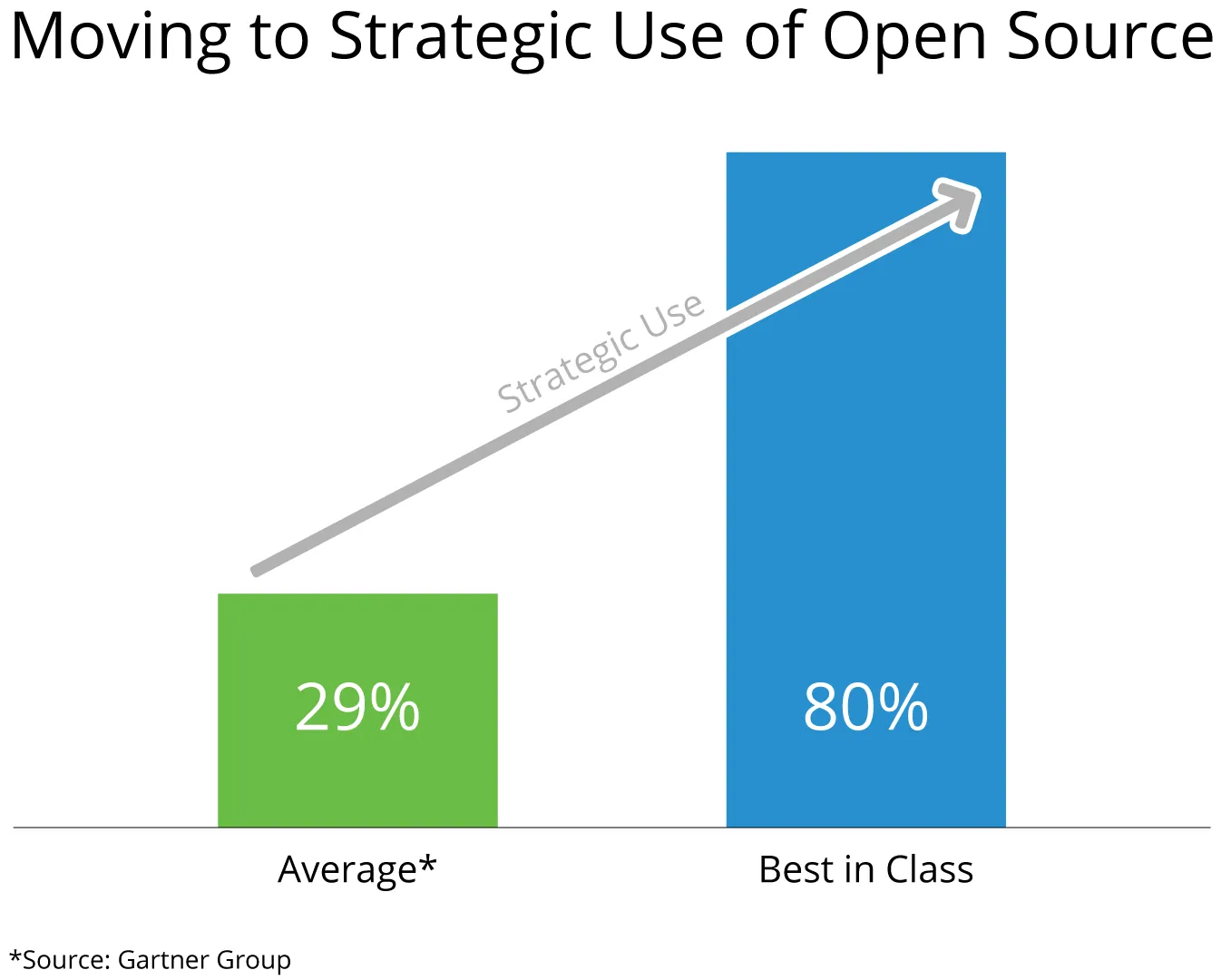Section: Introducing Open Source Business Models
Lesson: Introduction
Section Overview
In this section, we will provide definitions of several important open source business models, as well as comparisons between them. We will also discuss the relative strengths and weaknesses of each approach, and highlight which models can be used in which business scenarios.
Learning Objectives
By the end of this section, you should be able to:
-
Define the most often used open source business models.
-
Explain the differences and similarities among these business models.
-
Understand which models work best with which business scenarios.
Lesson: Definitions
What are the Major Open Source Business Models?
There are two ways to slice the notion of open source business models - those companies who consume open source (most organizations), vs. those who primarily produce open source. Let’s tackle the consumption side first.
Consumption

A recent Gartner study, highlighted above, showed that best in class software and technology organizations consume roughly 80% of the software they use in their products from open source, and then build the remaining 20% of their value add on top of that software stack to provide products to their customers. Doing this allows them to focus limited engineering resources on differentiated value while sharing the development costs of common code with the rest of the open source ecosystem.
Those companies producing open source code generally fall into the following types of business models (though they also likely strategically consume open source as well):
Licensing
This model relies on dual-licensing software under both a commercial license as well as an open source license, usually resulting in a ‘community edition’ and an ‘enterprise edition’ of the product that customers can choose depending upon what features they may need in the product. An example is the Oracle MySQL database, licensed under both a commercial license and the GNU Public License (later modules will cover licenses in more detail).
Hosting
In this model, companies provide the open source product in a Cloud-hosted SaaS (Software as a Service model). The primary examples of this are companies such as Amazon (Amazon Web Services) and Google (Google Cloud) that host open source technologies in hardened, scalable, enterprise-grade configurations.
Support
Enterprises often want to take advantage of the technological innovation provided by open source, but are more concerned with running their business on open source products. In this case, they turn to companies like RedHat and IBM, who offer support, technical guidance, professional services and training to help enterprises run business applications on top of an open source platform.
Open Core
This typically involves a capable core product which is free and open source. Around the core, a commercial entity provides closed source software that adds to or extends its capabilities. These add-ons are then sold as commercial software, and they can also be combined with the support model to provide training and technical support of the extensions.
Comparing Open Source Business Models
In comparing these open source business models, it’s important to note that different businesses have different reasons for choosing a particular model, and as noted above, there are sometimes cases where models are combined (e.g. Open Core & Support). Here are some primary reasons why businesses choose each model:
Consumption
When your business has differentiated intellectual property but needs to reduce cost and complexity, strategically consuming open source software and building your product or service on top of that open source base platform gives you access to shared innovation that you can leverage to build compelling products without having to build everything yourself.
Licensing
Utilizing a dual-licensing strategy gives you the opportunity to get the value of consumption and shared input for a ‘community’ version of your product, while selling an ‘enterprise’ version of the product to realize revenue and continue to fund work on the ‘community’ version. It also gives you the ability to let customers ‘try before they buy’ and potentially grow their business to require access to your paid enterprise version.
Hosting
Providing a hosted solution of an open source project/product allows companies that have built infrastructure to support code for their own benefit to offer that same software as a service for their customers. Similar to the licensing model, this allows organizations to derive revenue for the software, which in terms helps fund their hosting infrastructure and also allows them to continue development of the open source project.
Support
If a technology company has in-house expertise and a reputation for contributing to one or more open source projects, providing a ‘hardened’ enterprise version of those projects that is bundled with technical support and training allows them to continue their work in that open source project and lets them provide their customers with a solid base platform that they can then run business software on reliably. Stock markets running on RedHat Enterprise Linux are a great example of this model.
Open Core
This business model can work very well, but it also can develop a poor reputation for an organization if the community feels that the closed source extensions provided on top of the open source code should rightfully be part of the open source core. This model requires a delicate balance of providing added value that large enterprises are willing to pay for while still allowing the free community version of a project to be useful to individuals, as well as small to medium businesses.